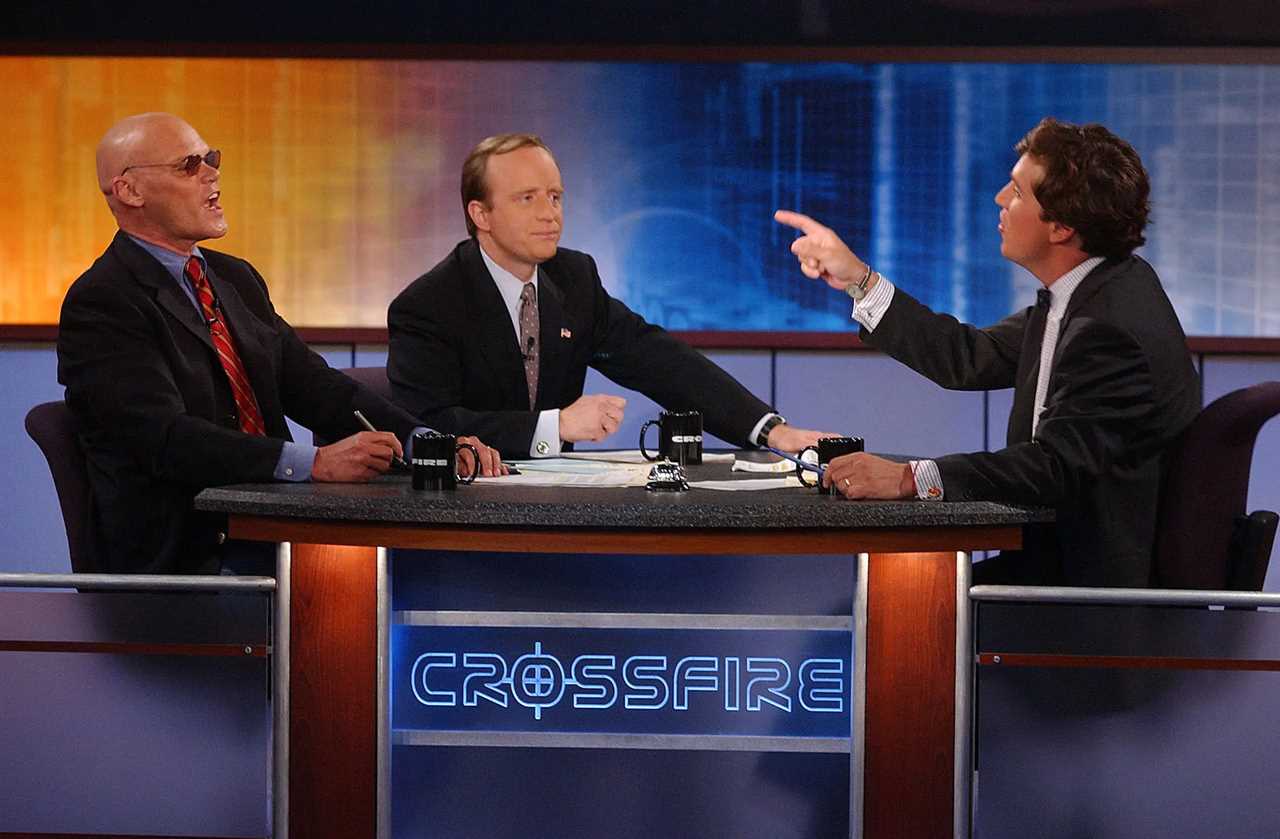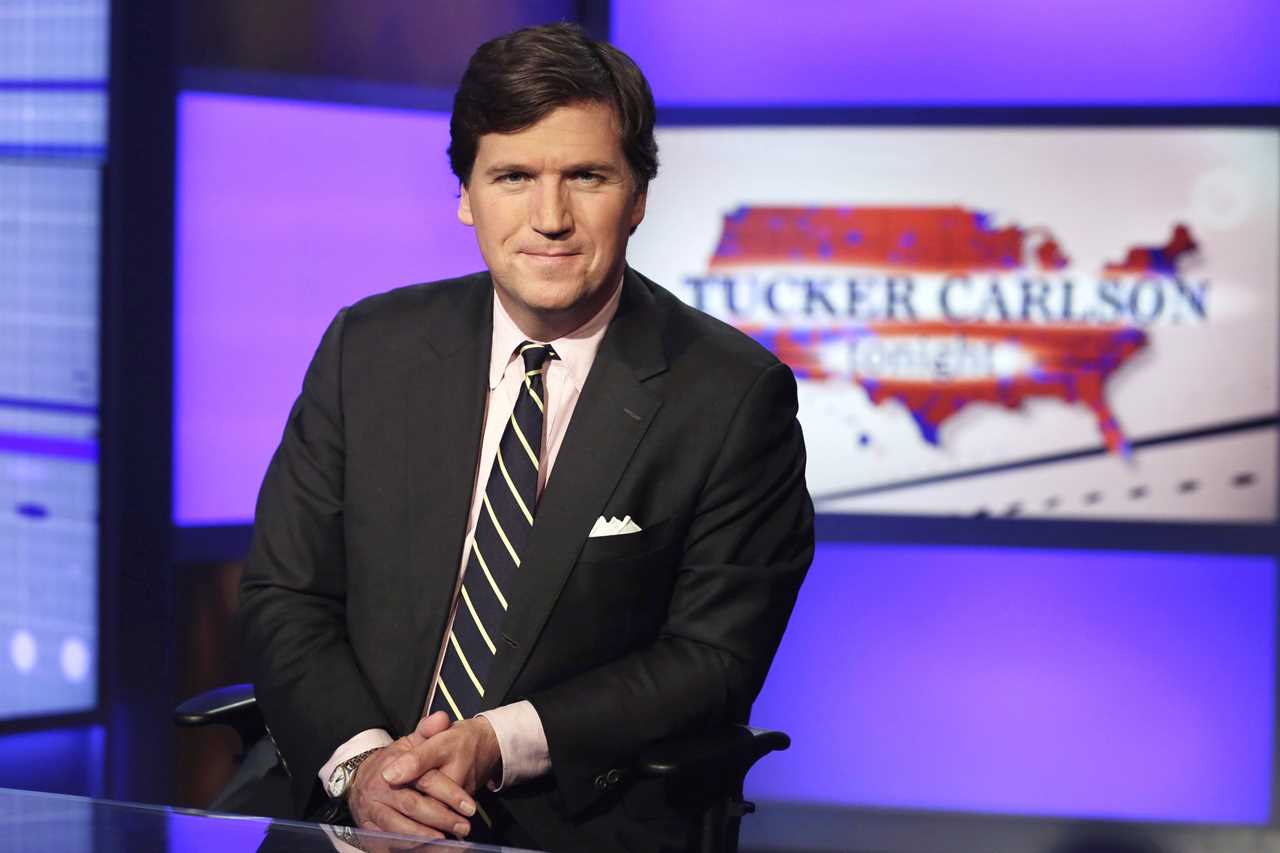
Has any piece of media criticism had such an immediate impact — or such a lousy legacy — as Jon Stewart’s Crossfire","link":{"target":"NEW","attributes":[],"url":"https://www.youtube.com/watch?v=aFQFB5YpDZE","_id":"00000187-5b2c-d697-abcf-dbfc8b890000","_type":"33ac701a-72c1-316a-a3a5-13918cf384df"},"_id":"00000187-5b2c-d697-abcf-dbfc8b890001","_type":"02ec1f82-5e56-3b8c-af6e-6fc7c8772266"}">famous takedown of Crossfire?
Back in 2004, the Daily Show host showed up on CNN’s venerable Beltway debate program to denounce its hosts for “hurting America.” Stewart’s bill of complaints, broadly, was that the show offered a kind of pantomime of political argument, where complex issues were relentlessly crunched into simplistic partisan frames, where topics were selected for pyrotechnics rather than enlightenment, and where political hackery was the order of the day. “Stop, stop, stop,” Stewart pleaded with hosts Tucker Carlson and Paul Begala. “Stop.”
Even without Facebook and Twitter and YouTube, the exchange went viral. Liberals, deep in Bush-era media disaffection, swooned. High-minded critics nodded in approval, contrasting Crossfire’s 21st-century lousiness with the erudite debates that had taken place on older shows like Firing Line or The Dick Cavett Show. Within a few months, Crossfire was killed off. Though its ratings hadn’t been awful, Stewart had seemingly destroyed the show’s credibility with the sub-40 demographic. CNN’s then-president namechecked Stewart in announcing the cancellation.
I got to thinking about the Stewart rant a couple weeks ago — ironically, while reading about the comedian’s former show. The Daily Show is currently rotating through a series of guest hosts as it looks for a permanent occupant of Stewart’s old seat, and late last month Al Franken had a stint. The guest one night was Franken’s old senatorial colleague, Lindsey Graham. For about 20 minutes, the frenemies made their way through a range of issues, sometimes mostly agreeing (on Ukraine), sometimes broadly disagreeing (on Donald Trump).
In the annals of televised disputations, it was not exactly William F. Buckley debating Gore Vidal. On the nerdy forensic-society merits, it might not even have been that different from the Begala-Carlson version of Crossfire. But in 2023, it was a relatively rare bit of content: A couple of people articulating positions and defending them, in turn. Which is to say, a genre of programming that vanished amid Stewart-style hand-wringing about cable-TV “head-butting.” And a genre whose absence might even be, um, hurting America.
It’s not that Stewart was wrong, per se, about Crossfire — or early-2000s cable-news pugilism more broadly. By the time the comedian showed up on CNN’s set, the format had tumbled a long way from the days of 60 Minutes’ point-counterpoint segment, or even from the 1990s Crossfire helmed by the comparatively heterodox likes of Pat Buchanan and Michael Kinsley. Much of the cable-news landscape seemed to be made up of shows seeking to get attention by going off the rails. When Stewart knocked Crossfire by gibing that calling it a debate was “like saying pro wrestling is a show about athletic competition,” it rang true. There wasn’t a lot of edification going on.
The problem, almost two decades later, is that what has replaced it across much of the TV landscape is somehow even less edifying. There are news shows that interview, with varying degrees of effectiveness, public figures who have a point of view. But as far as real-time engagement between folks with contrasting worldviews, it’s slim pickings. Today’s conflict-free opinion landscape is instead dominated by programming featuring like-minded people ginning one another up to even more rage. One common format might even have felt familiar to Stewart way back when: An opening monologue followed by a usually friendly conversation with someone who supports the point of the opening monologue, all designed for an audience that already agrees. Rarely does anything puncture the bubble.

More often than not, that’s the format used by Carlson, someone whom Stewart would likely acknowledge is hurting America more nowadays than he was back then. (According to one theory of the case, it was the viral public dissing by Stewart, and the CNN bosses’ subsequent finger-in-the-wind decision to cut him loose, that spurred Carlson’s evolution — Trump-at-WHCA style — from bow-tied TV prepster to the ideological force he’s become today.)
It’s not just politics, either. The media landscape used to be home for debates between architects or art critics, too. Weirdly, sports is one area in which the form lives on.
Among other things, our epistemic-closure model of political-opinion television enables viewers to come away with a remarkably wrongheaded sense of how political debate works. Watching most of the evening programming on Fox or MSNBC, you intuit that the proper way for an argument about some public issue to end is for one side to be utterly vanquished. (Or TOTALLY EVISCERATED, as you might say when sharing the clip.) Worse still, you start to think such a conclusion is actually possible, because in the world of celebrity hosts debating against straw men, it is! When it’s a couple of well-paid political operatives posturing away at one another, it’s usually not so tidy — something that’s probably a better takeaway if the goal is understanding this fractious republic of ours.
Of course, that’s assuming the audience wants to understand more about the knottiness of American life — let alone the emotionally unsatisfying aspects of politics like assembling coalitions or horse-trading over legislative details. Plenty of people in the evening cable racket who get paid better than I do, who study shows in 15-minute increments and have a very good idea of what turns viewers off, have come to the conclusion that offering too much unwelcome opinion is a bad business move. Sitting Democrats rarely go on Fox and sitting Republicans rarely go on MSNBC. Whether this is the fault of ambitious network execs chasing their partisan audiences or ambitious politicians afraid of primary-season voters is a kind of chicken and egg problem.
Still, we’re at a moment when at least one network, CNN, is recalibrating in the name of connecting to a middle-ground audience. Whether such an audience exists, of course, is a hotly debated open question. But, having already ousted some talent with a reputation for preaching to the converted, perhaps the network could trot out a property they already have. (A dubious effort to revive the show flopped in the late Obama era, but by now that’s almost as ancient history as the high Bush epoch of Stewart’s Crossfire takedown.)
And there’s evidence that at least some people are willing to pay for strange-bedfellows conversations. A few years ago, former George W. Bush strategist Karl Rove and former Obama strategist David Axelrod turned their buddy act into a popular Masterclass. Visit the Rove page on the website of his Harry Walker Agency speakers’ bureau and you’ll find that the GOP fixture and onetime progressive boogeyman advertises joint appearances alongside leading Democrats (the site suggests fellow Harry Walker clients Jim Messina, Robert Gibbs or Bill Daley) for “point-counterpoint” conversations at your next corporate retreat or professional conference. If event organizers are willing to pay tens of thousands of dollars for conventioneers’ after-dinner entertainment, perhaps a few solitary TV-watchers might stick around in the 9 o'clock hour, too?
Unfortunately, the challenge for cable outfits is no longer as simple as getting people to stick around at the appointed hour. The industry has been absolutely shellacked by cord-cutting, as people drop TV bundles in favor of specific streaming services. The question vexing executives is what kind of stuff would cause people to pay a monthly subscription price.
On this point, one person who has studied the phenomenon pronounces himself pessimistic.
“You’re arguing against a much bigger trend in the culture,” says Michael Socolow, a University of Maine media professor who has written elegiacally about the death of op-ed pages as “venues of common disputation” just like televised debate. A revived version of a show like Crossfire — i.e., something that would involve folks paying to import opinions they consider abhorrent into their feeds, with little hope of seeing the holders of those opinions ritually humiliated — would probably not cause viewers to reach for their wallets in order to pay for CNN.
Which isn’t to say such a thing wouldn’t be nice for America.
"The answer doesn’t have to be Crossfire and the answer doesn’t have to be Substack,” Socolow says. “We are going to need a venue of common disputation, and it’s not constructed yet. We don’t know what it will look like. But the point is, we’ve lost something, we don’t know how to get it back. Hopefully market forces and the culture will conspire to help us.”
----------------------------------------
By: Michael Schaffer
Title: Bring Back Crossfire!
Sourced From: www.politico.com/news/magazine/2023/04/07/bring-back-crossfire-00090842
Published Date: Fri, 07 Apr 2023 03:30:00 EST
Did you miss our previous article...
https://consumernewsnetwork.com/politics-us/the-state-department-blinken-suggests-that-the-state-dept-should-have-done-more-to-prepare-for-the-worstcase-scenario-of-afghanistan-withdrawal






